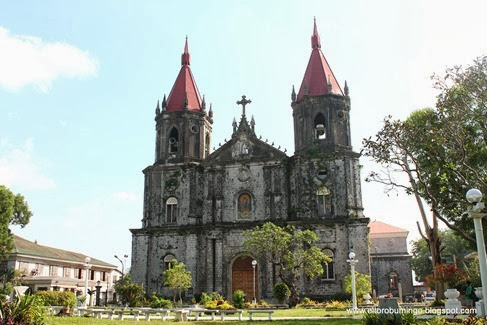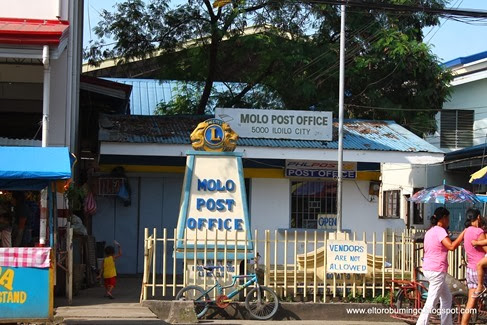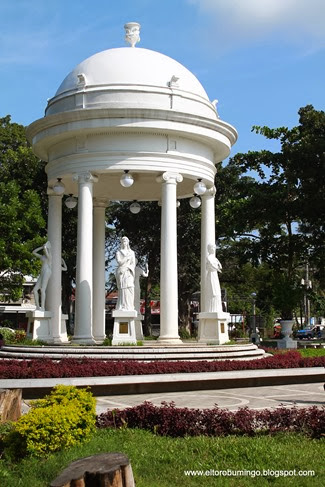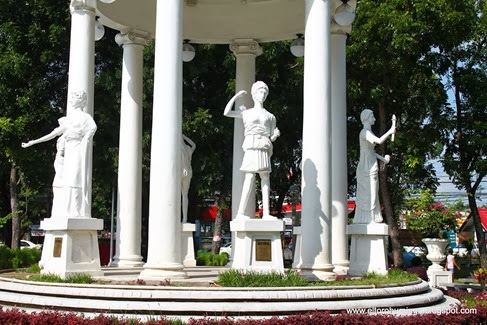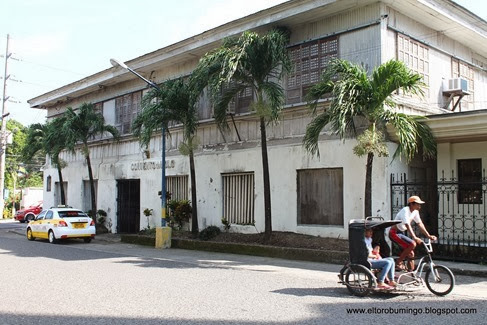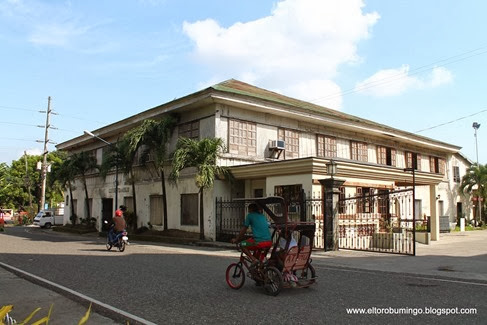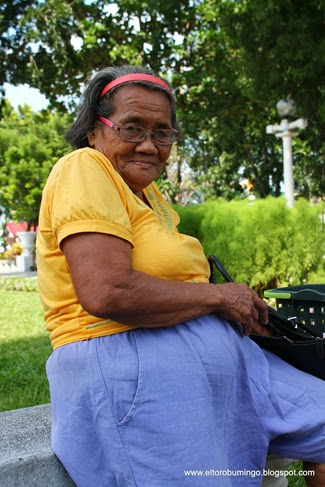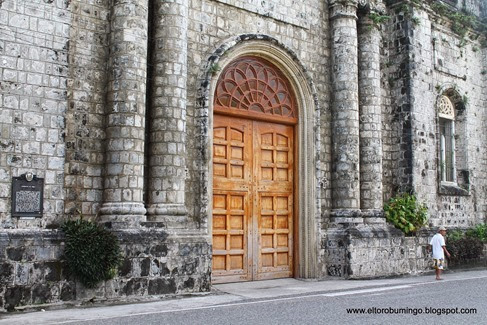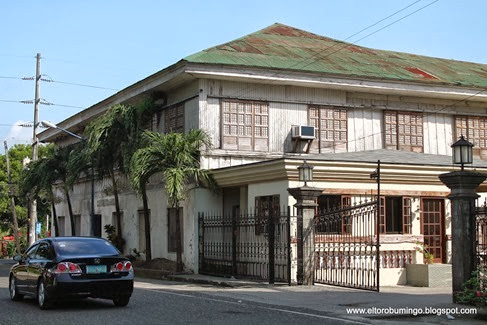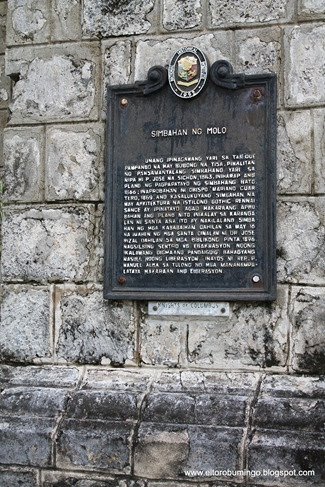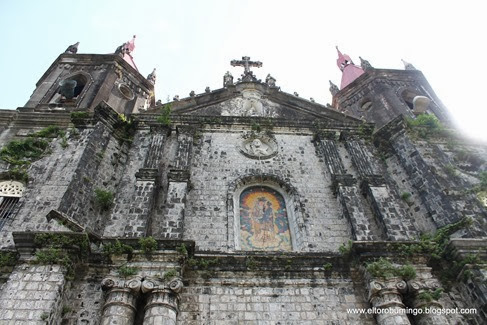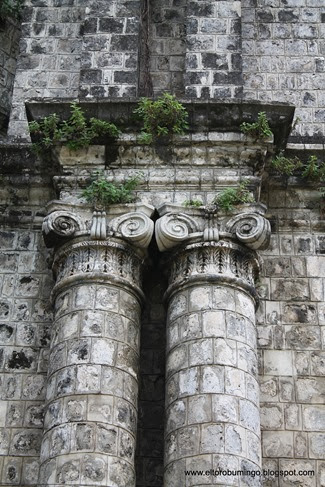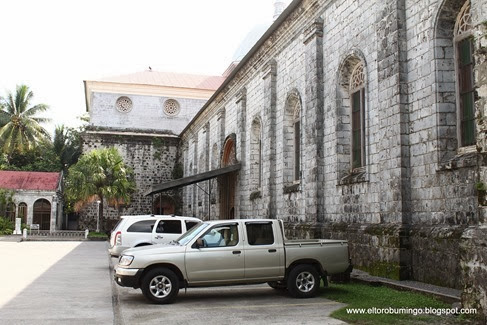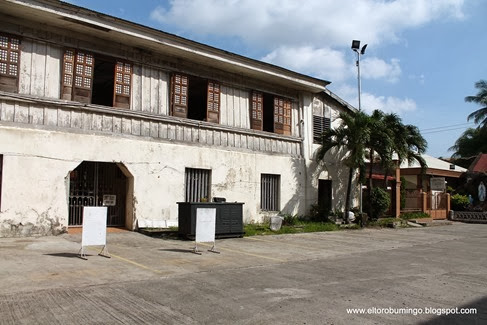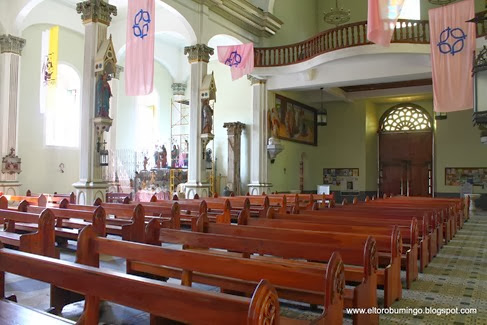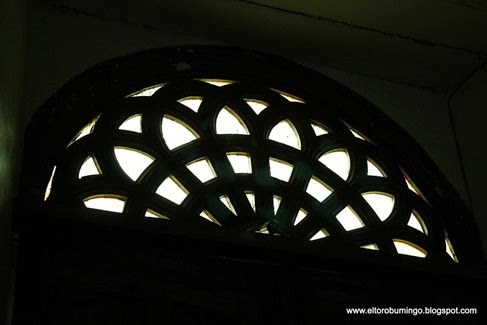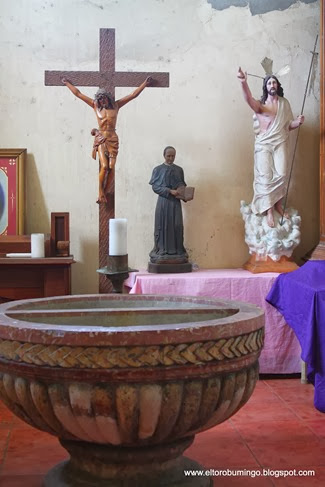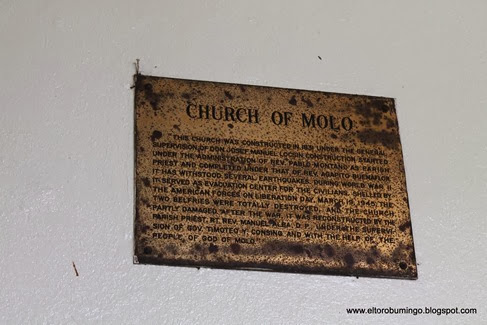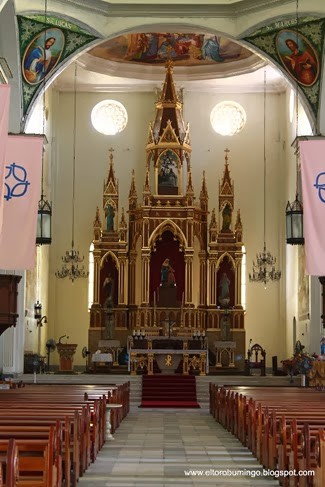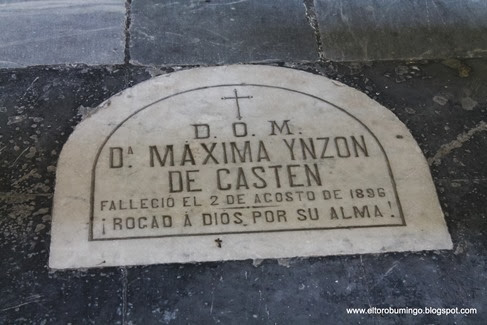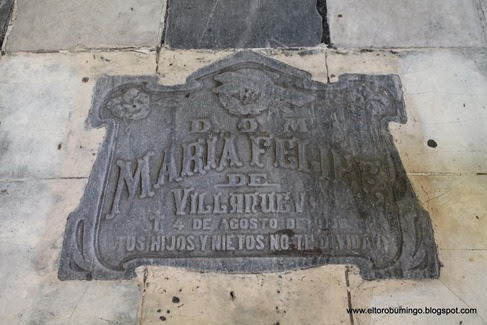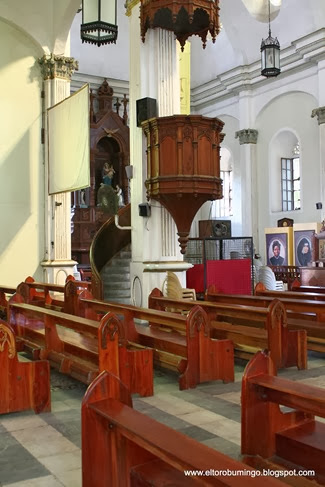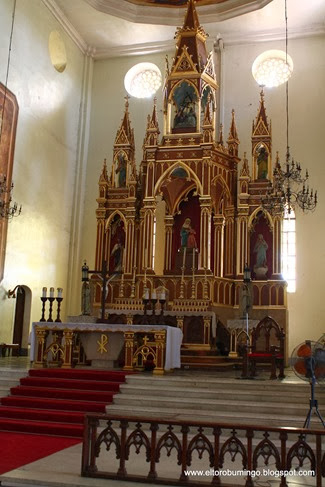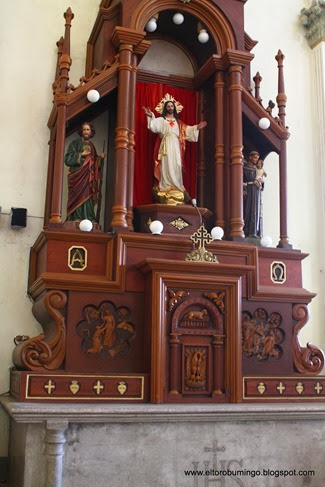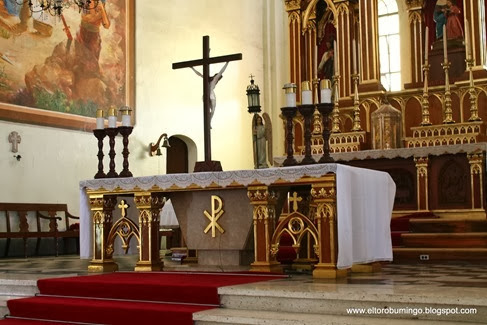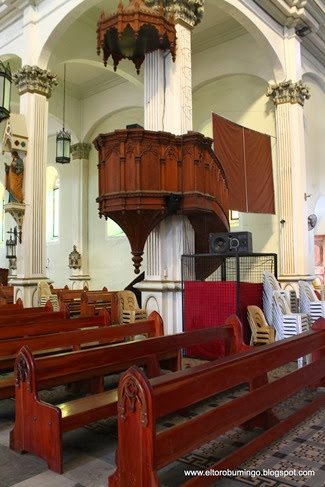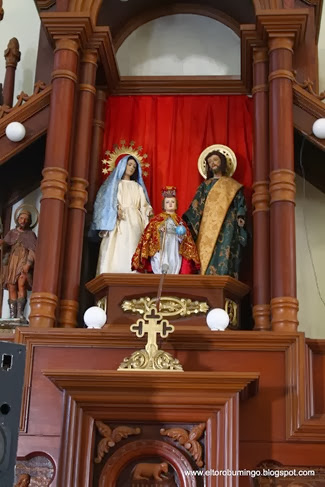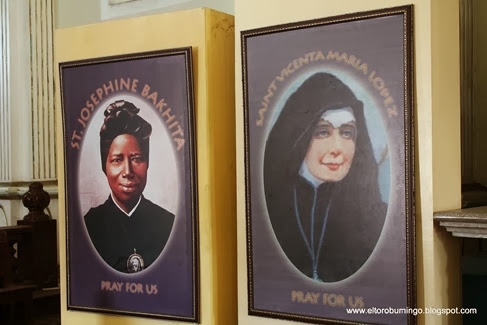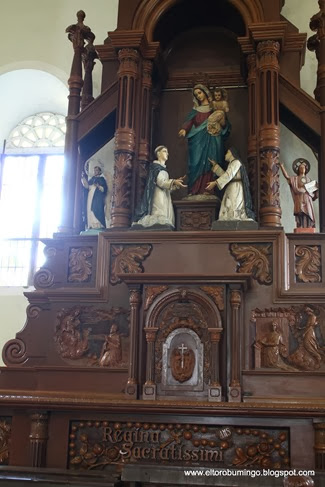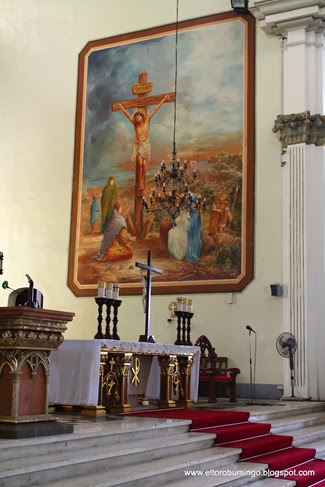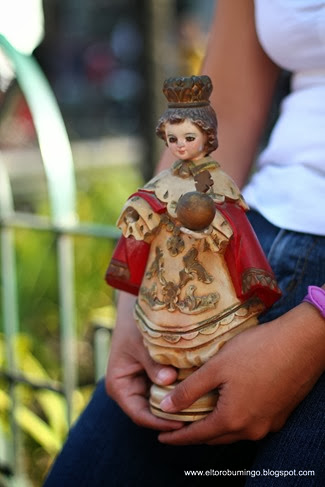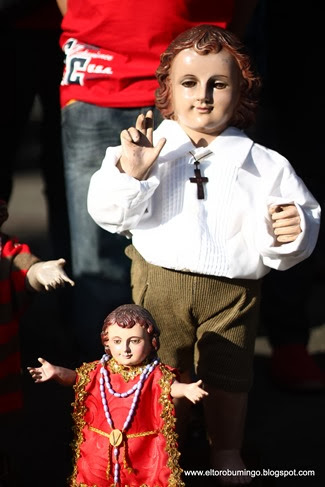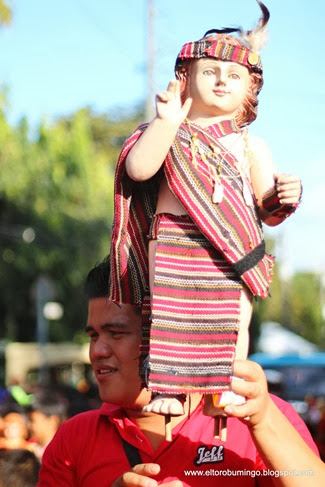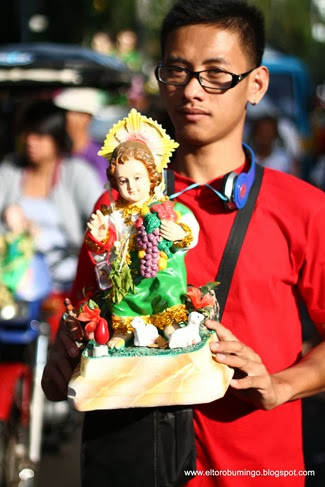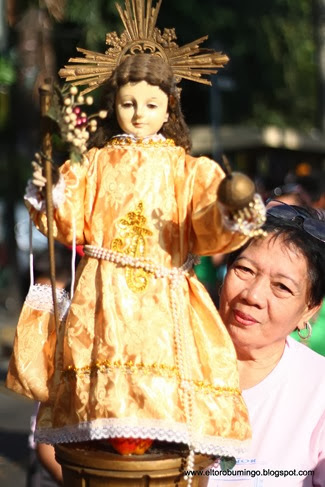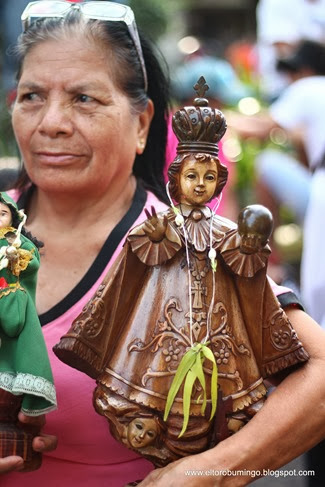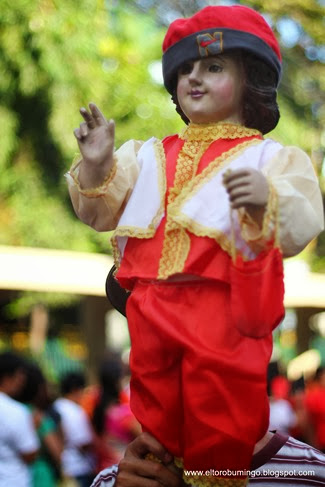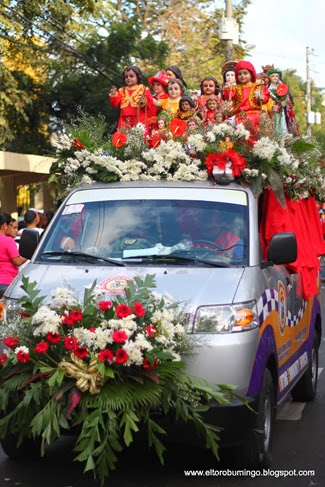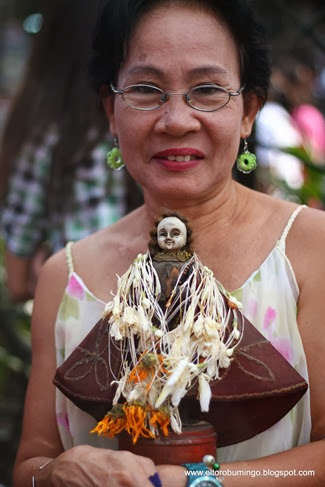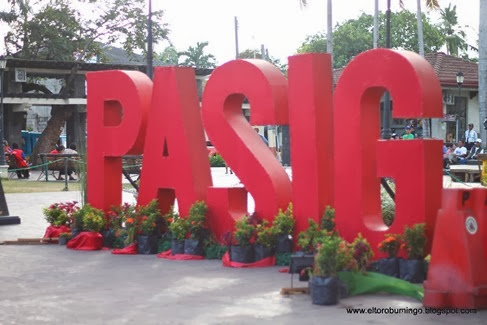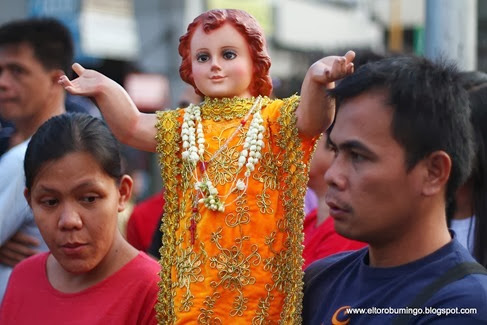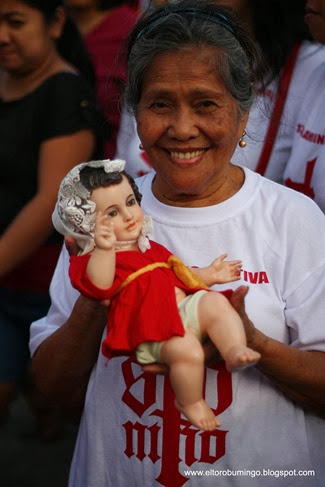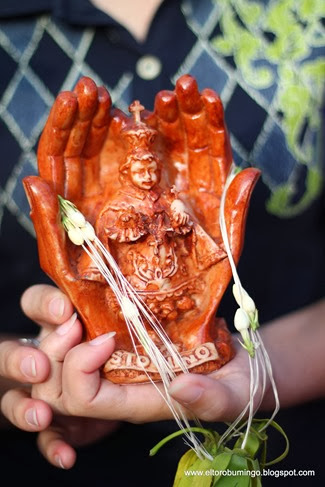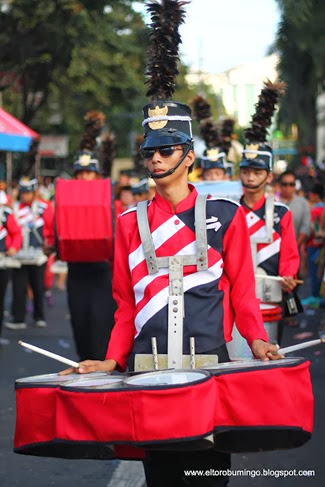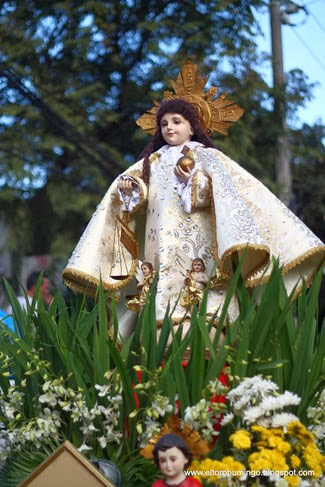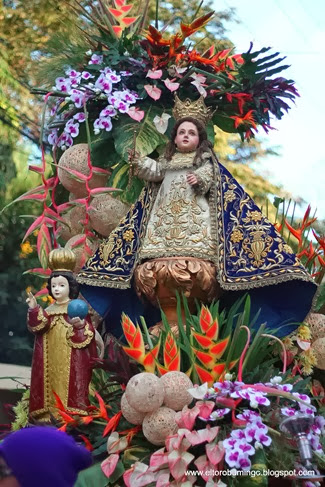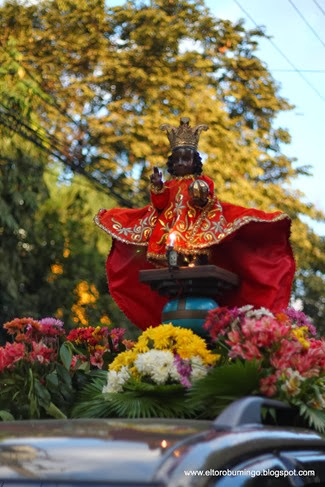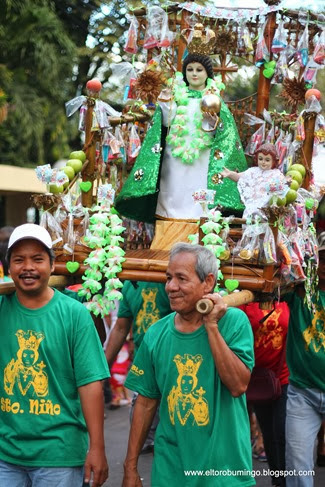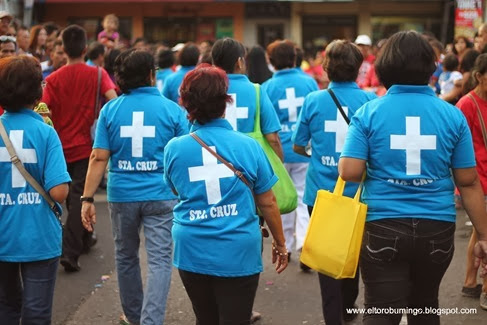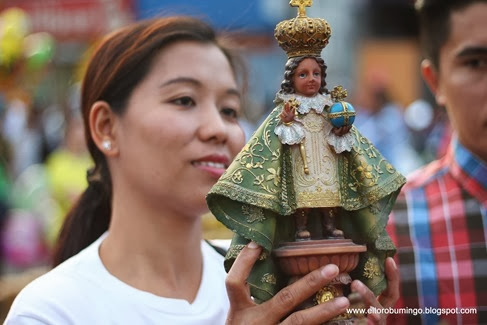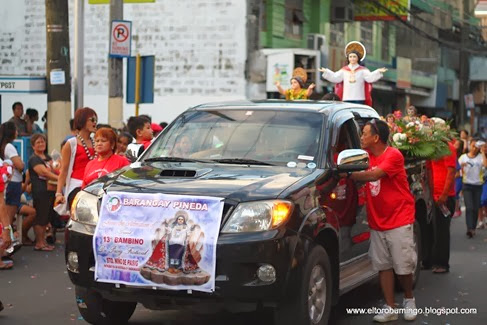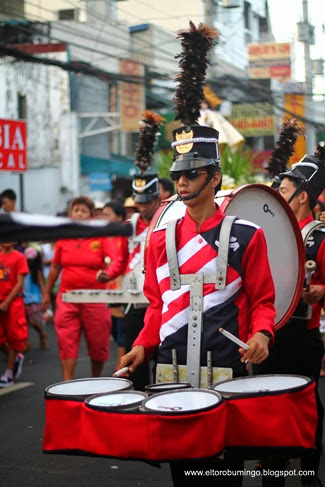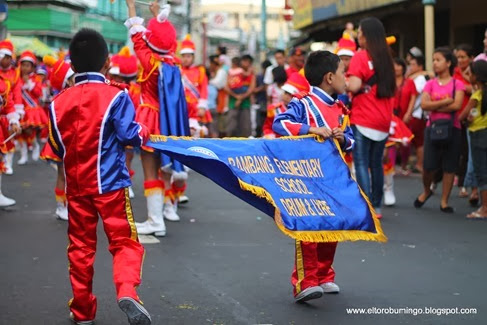The Molo Church in Iloilo City is one of the 10 churches we visited last October 2013 after attending the MassKara 2013. It’s huge and beautiful and is also known as the Church of St. Anne. The history of the church is written on two markers – one on the façade and the other, inside the church near the entrance.
The marker on the church façade reads in Tagalog:
Simbahan ng Molo
Unang ipinagawang yari sa Tabique Pampango na may bubong na tisa. Pinalitan ng pansamantalang simbahang yari sa nipa ni P. Jose Ma. Sichon, 1863. Iniharap ang plano ng pagpapatayo ng simbahang bato 1866. Inaprobahan ni Obispo Mariano Cuartero, 1869. Ang kasalukuyang simbahan na may arkitektura na istilong Gothic Renaissance ay ipinatayo agad makaraang aprobahan ang plano nito. Iniaalay sa karangalan ni Santa Ana, ito ay nakilalang simbahan ng mga kababaihan dahilan sa may 16 na imahen ng mga santa. Dinalaw ni Dr. Jose Rizal dahilan sa mga biblikong pinta, 1896. Nagsilbing sentro ng ebakwasyon noong Ikalawang Digmaang Pandaigdig. Bahagyang nasira noong Liberasyon. Inayos ni Rep. P. Manuel Alba sa tulong ng mga mananampalataya makaraan ang Liberasyon.
In English, it is roughly translated as:
Church of Molo
It was first constructed using Tabique Pampango with terracotta roof tiles. It was then replaced by a temporary church made of nipa by Father Jose Ma. Sichon in 1863. The plan for a stone church was presented in 1866. Bishop Mariano Cuartero approved the plans in 1869. The current church with architecture of Gothic Renaissance was built immediately after the plans were approved. The church was dedicated to the glory of Saint Anne and was famous as a church for women because of the 16 images of female saints. Dr. Jose Rizal visited the church in 1896 because of its biblical paintings. The church served as evacuation center during World War II. It was partially damaged during the Liberation. Rep. P. Manuel Alba repaired the church with the help of the devotees after the Liberation.
A marker inside the church reads in English:
Church of Molo
This church was constructed in 1831 under the general supervision of Don Josef Manuel Locsin. Construction started under the administration of Rev. Pablo Montano as Parish Priest and completed under that of Rev. Agapito Buenaflor. It has withstood several earthquakes. During World War II it served as evacuation center for the civilians, shelled by the American Forces on Liberation Day, March 19, 1945. The two belfries were totally destroyed, and the church partly damaged after the war. It was reconstructed by the parish priest Rt. Rev. Manuel Alba, D.P. under the supervision of Gov. Timoteo Y. Consing and with the help of the people of God of Molo.
It’s quite ironic to have statues of Greek gods and goddesses in front of the Roman Catholic Church of St. Anne.
An old house beside the St. Anne Church.
A grandmother (“lola” in Tagalog) selling a local delicacy in front of the church.
Corinthian columns adorn the Molo Church (St. Anne’s Church) in Iloilo City (district of Molo).
The main altar of the Molo Church.
Old gravestones adorn the floors of the Molo Church.
